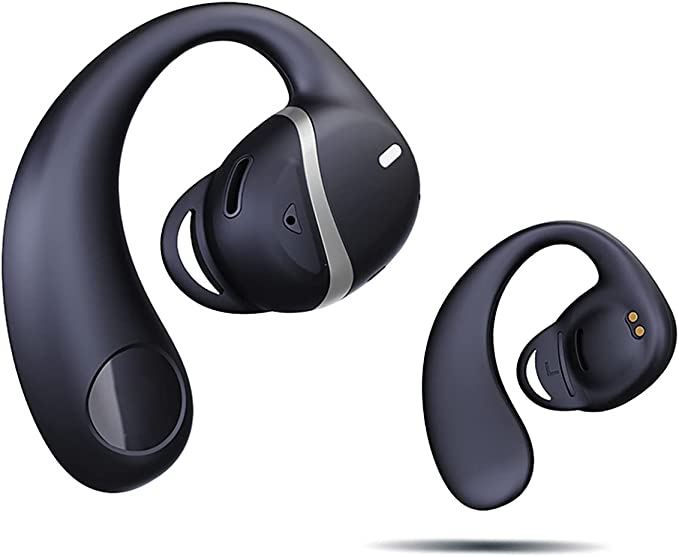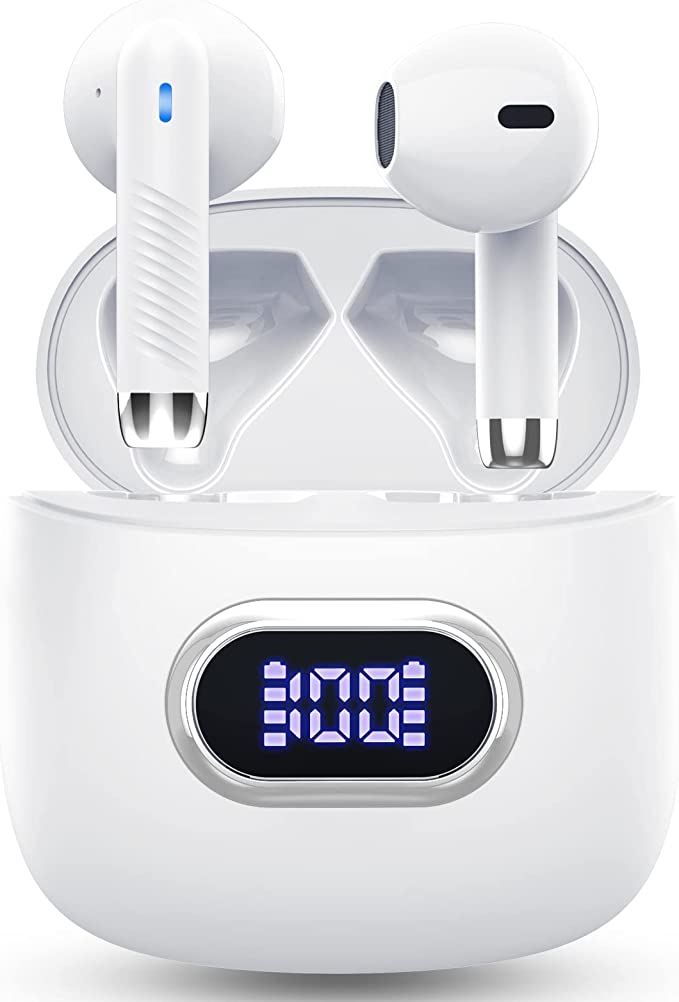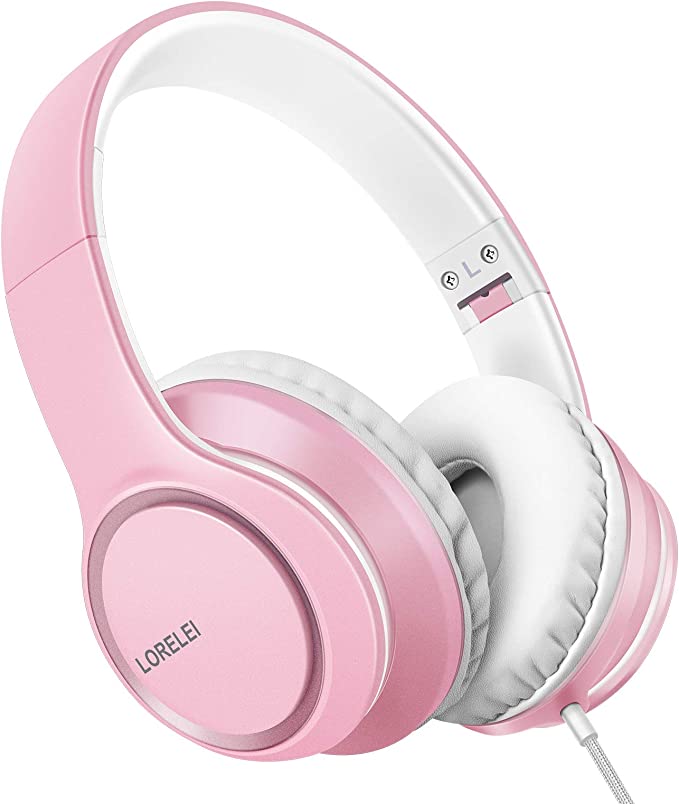The way we experience sound has been on a fascinating journey. From the communal experience of the family radio to the personal bubble of the first Walkman, and now to the sophisticated wireless earbuds that seem an extension of our very selves, personal audio technology has relentlessly evolved. But with this evolution comes new considerations. As our digital lives become increasingly intertwined with our physical surroundings, the desire for audio that integrates rather than isolates has grown. This sets the stage for technologies like open-ear headphones, a category that devices such as the ESSONIO Open Ear Wireless Headphones (based on their product description) aim to address. These are not just about listening to music; they represent a shift in how we interact with both our digital audio and the ambient world.

The Open-Ear Paradigm: Hearing the World and Your Soundtrack
What exactly does “open-ear” signify in the realm of headphones? Unlike traditional earbuds that create a seal within your ear canal, or over-ear headphones that encase your ears, open-ear designs deliberately leave the ear canal unobstructed. Picture it like this: instead of plugging a tiny speaker directly into a closed room (your ear canal), you’re placing speakers near an open doorway. This approach allows sound waves from the headphones and sound waves from your environment to reach your eardrum more naturally and simultaneously.
The most immediate and perhaps crucial implication of this design is enhanced situational awareness. Think about a runner on a city street. With conventional headphones, the blare of a horn or the approach of a bicycle might be dangerously muted. Open-ear technology, by its very nature, allows these critical environmental cues to filter through. The ESSONIO product description, for example, highlights that its open-ear earbuds are designed so users can “make sense the surrounding environment, making driving and riding safer.” This isn’t just a convenience; it’s a significant safety consideration, particularly in busy urban or outdoor settings where auditory cues are vital for navigation and hazard avoidance.
Beyond safety, the ergonomics of open-ear designs often translate to a different kind of comfort. Many users find that prolonged use of in-ear buds can lead to pressure, irritation, or a feeling of being unpleasantly “plugged up.” Open-ear headphones, often employing an “ear hanging design” that rests lightly on or around the ear (as described for the ESSONIO model, which aims for “no sense of weight”), can alleviate this. This can be particularly beneficial for individuals who wear headphones for extended periods – perhaps during a long workday that blends focused tasks with the need to hear colleagues, or during lengthy exercise sessions. Furthermore, the claim that “Excessive sweating will not cause ear inflammation” points to a potential hygiene benefit. By allowing better airflow than sealed designs, open-ear headphones may reduce moisture buildup, a common concern for active users.

Crafting Sound in Open Air: The Acoustic Balancing Act
Delivering a rich and immersive audio experience without sealing the ear canal is a significant acoustic challenge. When sound isn’t directed into a closed space, it can disperse, potentially leading to a perceived loss of bass or overall fullness. This is where careful acoustic engineering comes into play.
The term “HiFi sound quality” or “High Fidelity” is often used, as it is in the ESSONIO product description, which mentions “HiFi level high fidelity sound quality, rich bass, soft and natural midrange, bright and transparent high pitch, and clear layers.” In an open-ear context, achieving this requires innovative approaches to direct sound effectively towards the ear. This might involve precisely angled drivers, specialized acoustic chambers, or even, as the ESSONIO description mentions, “its own cavity and double auxiliary speakers.” The goal is to create a sound profile that feels complete and engaging, even when competing with ambient noise. While a truly “open” design will inherently allow some sound leakage (both in and out), the engineering challenge lies in maximizing the desired audio for the user while minimizing this leakage. The promise of a “9D stereo sound effect” suggests an attempt to create a spacious and enveloping sound field, which can make music feel more dynamic and immersive, as if experiencing a “concert experience.”
Conversations in Clarity: The Nuance of Noise Cancellation for Calls
In our always-connected world, headphones are not just for music; they are vital communication tools. This is where Environmental Noise Cancellation (ENC) technology, as featured in the ESSONIO headphones’ description, becomes relevant. It’s important to distinguish ENC from Active Noise Cancellation (ANC). While ANC is primarily designed to reduce external noise for the listener, creating a quieter listening experience, ENC focuses on the other side of the conversation: ensuring your voice is transmitted clearly to the person you’re speaking with.
ENC systems typically use multiple microphones – the ESSONIO product description specifies “built-in dual microphones.” One or more of these microphones focus on capturing your voice, while others identify and analyze ambient sounds in your environment. Sophisticated algorithms then work to subtract this environmental noise from the voice signal before it’s transmitted. The claim that ENC can “effectively reduce the environmental noise by 95%” suggests a significant effort to filter out common disturbances like traffic, wind, or the murmur of a crowd. This can make a substantial difference in call quality, making conversations feel more direct and understandable, “just like face-to-face communication,” even when you’re in a less-than-ideal acoustic environment.
The Unseen Connection: Bluetooth 5.3 and the Quest for Seamless Audio
The “wireless” in wireless headphones is typically powered by Bluetooth technology. This short-range wireless communication standard has undergone numerous iterations, each bringing improvements in speed, stability, and efficiency. The ESSONIO headphones are described as being equipped with a “Bluetooth 5.3 smart chip.”
To appreciate what Bluetooth 5.3 brings to the table, it’s helpful to understand its lineage. Early Bluetooth versions were revolutionary but sometimes suffered from connection dropouts, noticeable latency (delay), and higher power consumption. Bluetooth 5.3 offers several enhancements pertinent to audio devices. It generally provides faster data transmission speeds, which can contribute to lower latency – meaning the audio stays better synchronized with video content, for example. It also boasts more stable connections, reducing the frustration of intermittent audio cutouts, especially when your phone is in a pocket or bag. Furthermore, Bluetooth 5.3 includes features designed for greater power efficiency, which can help extend the battery life of both the headphones and the connected device. Broad compatibility is also key; the stated support for “IOS/Android/Windows devices” means these headphones should readily connect with the vast majority of smartphones, tablets, and computers people use daily.
Endurance for the Everyday: The Science of Battery Life in Wearables
One of the primary considerations for any portable electronic device is battery life. For wireless headphones, which are often used for extended periods and on the go, this is paramount. The ESSONIO product description outlines a “large capacity battery” with a claimed “single 10 hour endurance” after a 1.5-hour charge. This is a respectable figure for continuous playback.
However, the true endurance often comes from the synergy with a charging case. The provided information states that the headphones “can be used with the charging cabin for up to 30 hours.” This means the case itself holds additional charge, capable of replenishing the earbuds multiple times before the case itself needs recharging. This significantly extends the overall untethered usage time, making it “easy to cope with various sports and meet the needs of daily and outdoor use for a long time.” A thoughtful touch mentioned is the “LED power digital display,” which allows users to see the remaining charge in the case, preventing unexpected dead batteries. The science here involves optimizing battery chemistry (typically Lithium-ion), power management within the chips, and efficient charging circuits.

Ready for Reality: What IPX4 Water Resistance Means for Daily Use
Active users, or even just those caught in an unexpected downpour, need assurance that their headphones can withstand some exposure to moisture. This is where Ingress Protection (IP) ratings come in. The ESSONIO headphones are cited with an “IPX4 level daily dustproof and waterproof” rating.
Let’s break down “IPX4”:
* IP stands for Ingress Protection.
* The first digit (replaced by “X” here) relates to protection against solid particles (like dust). An “X” means the device hasn’t been specifically tested or rated for dust ingress according to this standard.
* The second digit, “4” in this case, indicates the level of protection against liquids. An IPX4 rating means the device is protected against splashing water from any direction.
In practical terms for a user, an IPX4 rating means the headphones should be resilient enough to handle sweat during vigorous exercise (“exercise for a long time without fear of sweating”) or light rain. It doesn’t mean they are fully waterproof for submersion (like swimming), but it provides a good degree of protection against common moisture encounters, allowing users to “enjoy selfless sports anytime and anywhere” with greater peace of mind.

Beyond the Specs: The Holistic Experience of Open-Ear Audio
Ultimately, the value of any piece of technology lies not just in its individual specifications but in how these elements combine to create a cohesive and beneficial user experience. The open-ear paradigm, as exemplified by the described features of devices like the ESSONIO Open Ear Wireless Headphones, represents a thoughtful approach to balancing our engagement with digital audio and our connection to the physical world.
Technologies such as refined acoustic delivery for open-ear designs, sophisticated noise cancellation for calls, advanced Bluetooth connectivity for stability, extended battery life for uninterrupted use, and practical water resistance all contribute to this holistic experience. The simple inclusion of “highly sensitive touch sensing” for media control and voice assistant access further points to a design philosophy centered on user convenience, especially during activities where fumbling with a phone is impractical.

As personal audio technology continues its rapid evolution, the trend towards more environmentally aware and comfortable solutions is likely to grow. Open-ear audio is a significant part of this movement, offering a compelling blend of personal sound and peripheral perception that resonates with the demands of modern, active, and safety-conscious individuals. It’s a field ripe with innovation, promising even more nuanced and integrated ways to experience our auditory world in the years to come.




